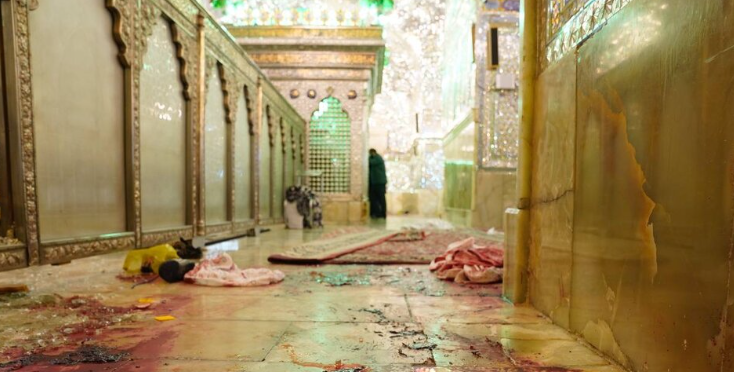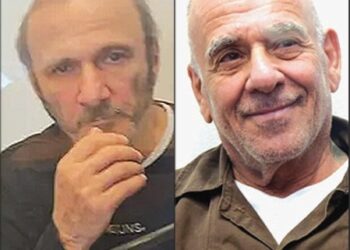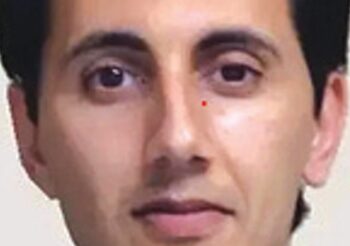December 16, 2022

A machinegun terrorist attack on a major Shia mosque in Shiraz has killed 13 people and wounded around 40. The government has blamed the attack on just about every country and organization that it is in conflict with. The Islamic State has claimed responsibility, but some terror analysts doubt that, given that the attack was not in the style commonly used by the Islamic State.
The usual conspiracy theories are going the rounds with some Iranians opposed to the regime charging that the attack was launched by the regime itself to try to paint the ongoing protesters in the streets as a band of killers. But the protesters are just about the only people the regime has not accused of being behind the mosque attack.
The attack struck the Shah Cheragh Shrine in Shiraz October 26 just before evening prayers. A security camera showed a man entering the mosque carrying a large bag in which he had hidden a machinegun. He then pulled out the weapon and began spraying the mosque with bullets.
The government at first said there were three assailants and that two had been captured at the scene and one had gotten away and was being pursued. Later, it said there was just one assailant. Still later, it said it had nabbed a second man involved in the attack and six other people who had supported the attack but were not present at the shrine when it was carried out.
Later still, the Intelligence Ministry said a total of 26 people none of them Iranian had been apprehended. It said the 26 men comprised all those involved in the plot and that the men were nationals of Azerbaijan, Tajikistan and Afghanistan. It did not say if they were Sunni or Shia.
The government said the machinegun wielder was injured when he was subdued at the scene and died two days later. The Intelligence Ministry named him as Shebahan Kamrouni, a Tajik national. It said the leader of the plot was an Azerbaijani national, but did not give his name. And it named the chief logistician as Mohammad Ramez Rashidi, an Afghan.
The Intelligence Ministry said the leader of the plot was in communication with the Islamic State subgroup based in Afghanistan and generally known as The Islamic State-Khorasan Province.
The division of the Washington-based American Enterprise Institute (AEI) that is tracking the ongoing protests in Iran said, “The Islamic State likely claimed responsibility for the attack opportunistically without having ordered or directly enabled it” because it is “trying to capitalize on the shrine attack and protests to stoke instability and sectarian conflict in Iran.”
AEI said the attack did not match the pattern used by the Islamic State. “The attacker was not wearing a suicide vest and was captured wounded but alive—a very unusual occurrence for Islamic State terrorists. Islamic State statements claiming credit for the attack were also confused, offered no details other than those already available in the media when they were released and lacked the specificity that is common in claims of credit for attacks that Islamic State actually directs.”
The regime gave immense news coverage to the attack and to the funerals for the victims.
In a statement days before the Intelligence Ministry said 26 people had been arrested, Interior Minister Ahmad Vahidi laid the blame for the attack on:
• The United States;
• Great Britain;
• Saudi Arabia;
• Israel;
• The Mojahedin-e Khalq;
• Monarchist groups;
• The Islamic State and
• “Some other Western countries.”
Gen. Hossain Salami, the commander of the Pasdaran, said, “We firmly declare that the fire of the revenge of the people of Iran will finally catch up with them and punish them for their shameful deeds.” President Raisi also pledged “a severe response.”
The attack was carried out the same day that a huge crowd turned out in Saqqez to mark the 40th day after the death of Mahsa Amini, the Kurdish woman whose death in custody sparked the continuing street protests.
The Shah Cheragh Shrine is the burial site of Sayyed Mir Ahmad and his brother, Sayyed Mir Mohammad, the sons of the seventh Imam and brothers of the eighth Imam, Imam Reza.
The EU, Britain, Iran’s Arab neighbors and UN Secretary General Antonio Guterres were all quick to issue statements condemning the attack. The United States did not issue a statement.
The government earlier said 15 people were killed, but later revised the death toll to 13.


























